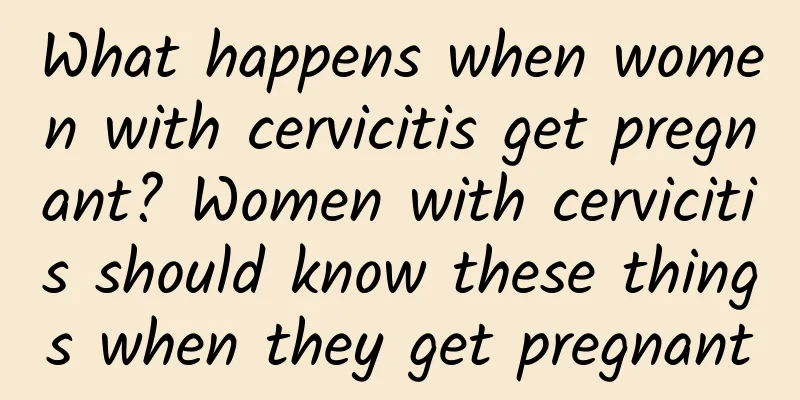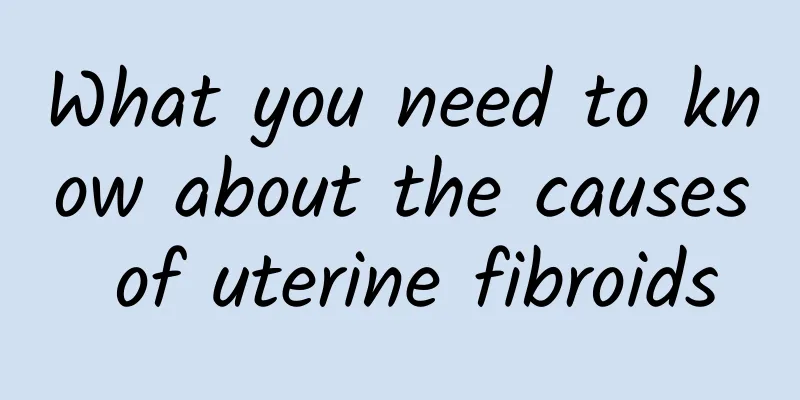How is pelvic inflammatory disease formed and how should it be treated?

|
Pelvic inflammatory disease is also called adnexitis, which is a common gynecological disease. Many women worry that they cannot get pregnant because of pelvic inflammatory disease. So how does pelvic inflammatory disease form? How to treat it? Pelvic inflammatory disease can be caused by the spread of external genital inflammation, inflammation of adjacent organs or infection from other parts of the body. Bacteria usually enter the pelvic cavity during menstruation, miscarriage, childbirth or through various reproductive tract surgical wounds to cause inflammation. Pelvic inflammatory disease is generally divided into acute and chronic. The former is acute and generally has obvious causes. If the treatment is timely, thorough and effective, it can often be cured. When acute inflammation cannot be completely treated, it may turn into chronic disease. However, it is more because the disease is slow and mild and is not paid attention to, so the treatment is not timely and delayed to chronic disease. This type of pelvic inflammatory disease often leads to infertility in women. Inflammation of the female pelvic reproductive organs and their surrounding connective tissues, and pelvic peritonitis, is called pelvic inflammation, including metritis, salpingo-oophoritis, pelvic connective tissue inflammation, and pelvic peritonitis. It can occur in one or more places at the same time and is one of the common diseases in women. Since the fallopian tubes and ovaries are collectively called appendages, fallopian tube inflammation often affects the adjacent ovaries. It is also called adnexitis. General treatment of pelvic inflammatory disease can alleviate patients' mental concerns, enhance their confidence in treatment, increase nutrition, exercise, pay attention to the combination of work and rest, and improve their body resistance. Pelvic inflammatory disease - physical therapy: warm and benign stimulation can promote local blood circulation in the pelvis, improve the nutritional status of tissues, improve metabolism, and promote the absorption and disappearance of inflammation. Commonly used methods include short wave, ultrashort wave, ion penetration, wax therapy, etc. |
<<: What to do if you have irregular menstruation after childbirth
>>: Does ovarian cyst affect fertility? What are the symptoms?
Recommend
What issues should be paid attention to when treating vulvar leukoplakia?
If you want to cure vulvar leukoplakia, it is not...
What is the best way to eliminate uterine fibroids? The secret recipe to eliminate uterine fibroids
What is the best way to eliminate uterine fibroid...
The difference between uterine effusion and uterine fibroids
Bacteria retrograde infection reaches the pelvic ...
Let me introduce to you what are the symptoms of menopausal menstrual disorders?
During menopause, women's ovarian function be...
Can I have a medical abortion at the age of 42? What are the standards for medical abortion?
There are also some women who do not take protect...
How to self-diagnose whether you have uterine fibroids?
Uterine fibroids are the most common benign tumor...
Don't take it lightly! US: Excessive fructose intake can affect memory
Whether adults or children, few can resist the te...
What foods are good for preparing for pregnancy with uterine fibroids? What foods are taboo to eat with uterine fibroids?
What foods are good for preparing for pregnancy w...
Four common pathological changes of chronic cervicitis
Chronic cervicitis, due to its slow onset and lon...
Three aspects to pay attention to in preventing vaginitis
Paying more attention to personal hygiene in dail...
To prevent the occurrence of ovarian cysts, you need to pay more attention to everything
In life, how should we take preventive measures a...
What causes female vulvar leukoplakia?
Summer is the season most prone to disease, and v...
How to prevent miscarriage? Pay attention to these 6 points
During pregnancy, being careful about sex, mainta...
Is bilateral polycystic ovary serious?
Polycystic changes on both sides of the ovaries a...
5 causes of ectopic pregnancy
Ectopic pregnancy means that the embryo begins to...









